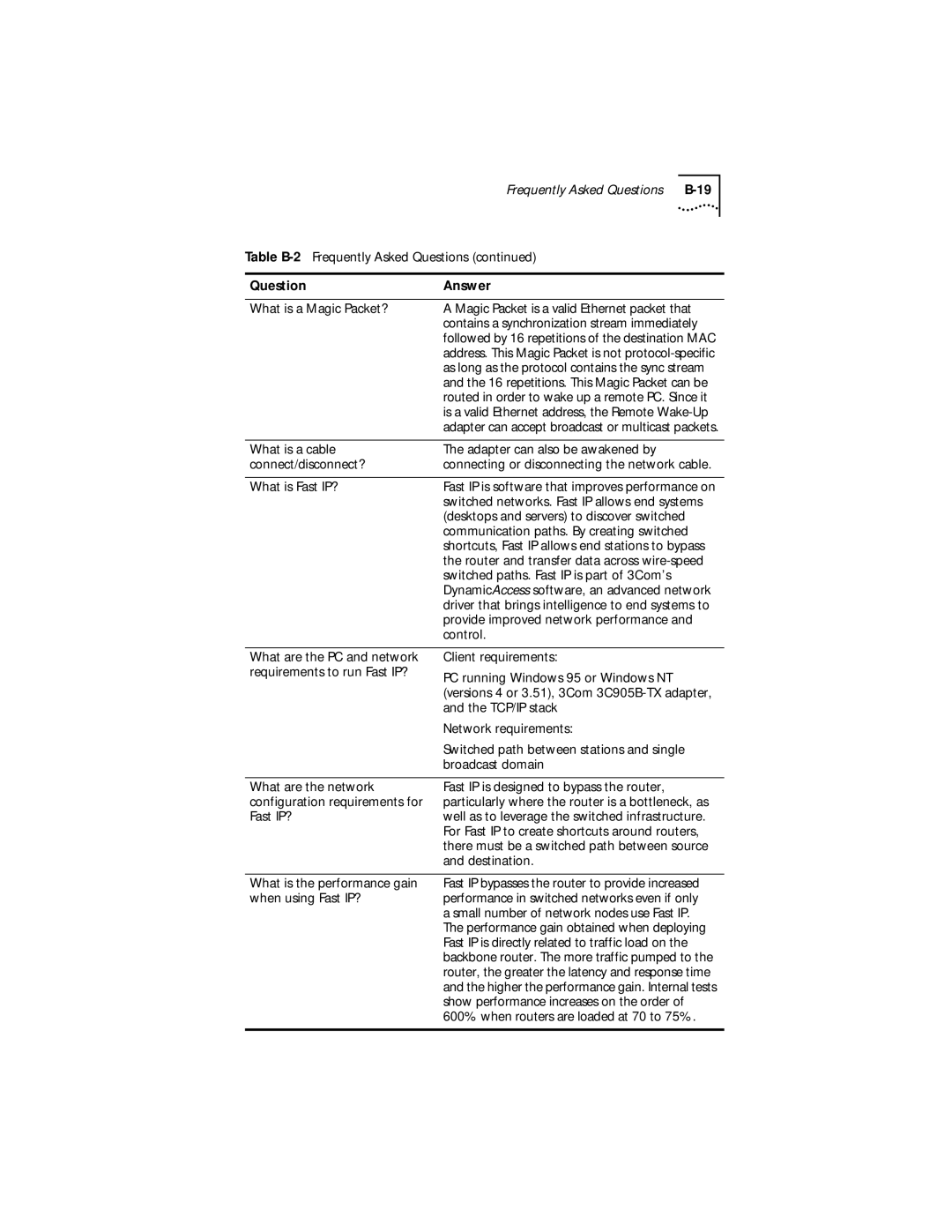
Frequently Asked Questions B-19
Table
QuestionAnswer
What is a Magic Packet?
A Magic Packet is a valid Ethernet packet that contains a synchronization stream immediately followed by 16 repetitions of the destination MAC address. This Magic Packet is not
What is a cable | The adapter can also be awakened by |
connect/disconnect? | connecting or disconnecting the network cable. |
|
|
What is Fast IP? | Fast IP is software that improves performance on |
| switched networks. Fast IP allows end systems |
| (desktops and servers) to discover switched |
| communication paths. By creating switched |
| shortcuts, Fast IP allows end stations to bypass |
| the router and transfer data across |
| switched paths. Fast IP is part of 3Com’s |
| DynamicAccess software, an advanced network |
| driver that brings intelligence to end systems to |
| provide improved network performance and |
| control. |
|
|
What are the PC and network | Client requirements: |
requirements to run Fast IP? | PC running Windows 95 or Windows NT |
| |
| (versions 4 or 3.51), 3Com |
| and the TCP/IP stack |
| Network requirements: |
| Switched path between stations and single |
| broadcast domain |
|
|
What are the network | Fast IP is designed to bypass the router, |
configuration requirements for | particularly where the router is a bottleneck, as |
Fast IP? | well as to leverage the switched infrastructure. |
| For Fast IP to create shortcuts around routers, |
| there must be a switched path between source |
| and destination. |
What is the performance gain when using Fast IP?
Fast IP bypasses the router to provide increased performance in switched networks even if only a small number of network nodes use Fast IP.
The performance gain obtained when deploying Fast IP is directly related to traffic load on the backbone router. The more traffic pumped to the router, the greater the latency and response time and the higher the performance gain. Internal tests show performance increases on the order of 600% when routers are loaded at 70 to 75%.
